Rising Waters focuses on the conundrum of the climate crisis and its side effects — particularly the way it affects our daily lives and properties. With Earth’s temperatures rising, our environment is no longer safe, our habitats are becoming uninhabitable, and extreme disaster is constantly at our back door. It’s time to not just mitigate the crisis, but to create innovative solutions that aid our adaptation to climate change and make our communities safer and better places for future generations.
‘How can we create biodiversity and inclusivity of nature in our communities that adapt to the current and subsequent climate crisis we will inevitably face, whilst ensuring that the architectural growth plan also serves as a climate resilient plan.’
Here I explore a neighbourhood that sits on the flood plain that is constantly overwhelmed by flooding yearly from, extreme rainfall, sewage overflow and poor storm-water management. My site is located in Rockcliffe-Smythe area, with the Black Creek running through it.
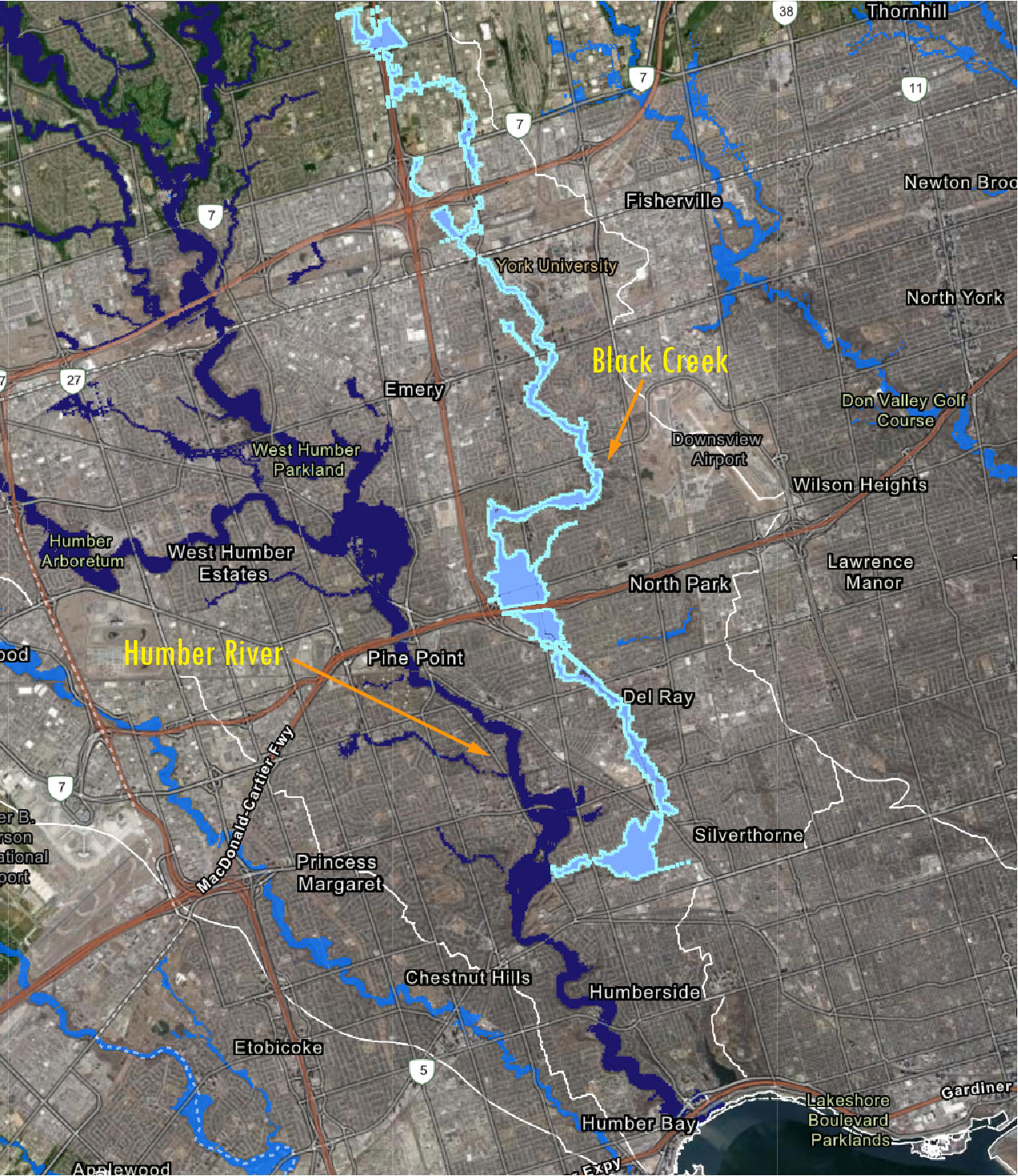
The Black Creek feeds into the Humber River shed. Over years the Black creek has been engineered into a concrete channel. Losing its permeable surface and exacerbated the flooding in the surrounding areas by restricting the flood plain of the creek.
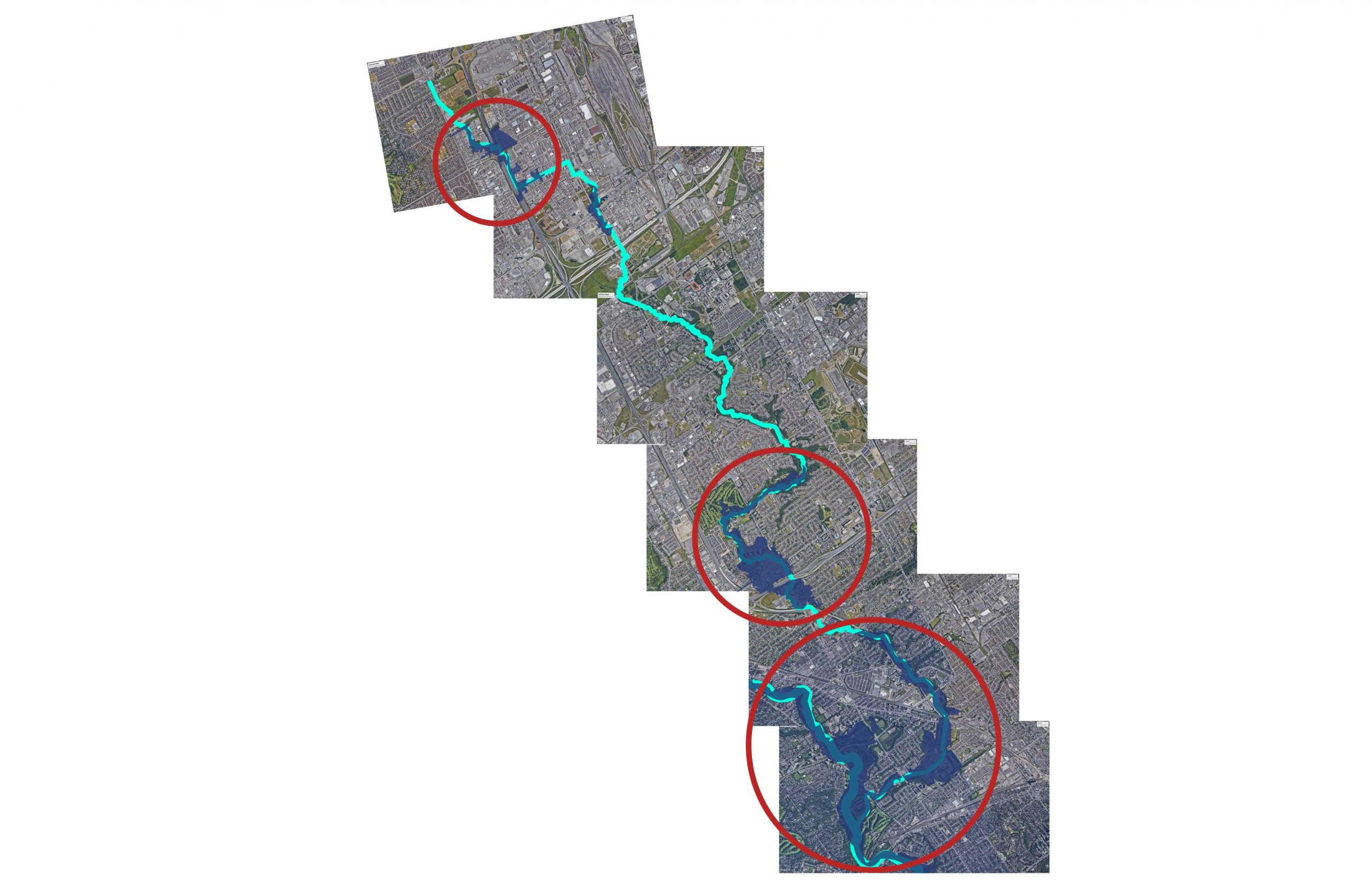

Highlighted in red are the three major flood zones along the Black creek. From the headwaters to the mouth flowing into the Humber River. The surface have become a concrete jungle with barely any green or permeable surfaces to help slow down or slow the flooding along the watershed. The site area is located on the mouth of the creek, the larger of the flood zones. It is a residential and post industrial area with about 350 homes, 20 warehouses and 3 schools.

This is Cordella avenue. It is situated along the Black creek which flows into the Humber river. In July of 2020 the neighbourhood was flooded from severe thunderstorms and rainfalls of about 50 to 70mm.

In 1954, during Hurricane Hazel the river was inundated beyond its flood plains, a lot of houses around the river were destroyed. It was a terrible disaster displacing about 2000 families from their homes in Toronto with about 4000 families all together in Southern Ontario. This brought about the formation of the TRCA (Toronto and Region Conservation Authority) which administers flood control, recreation and preservation of watersheds.
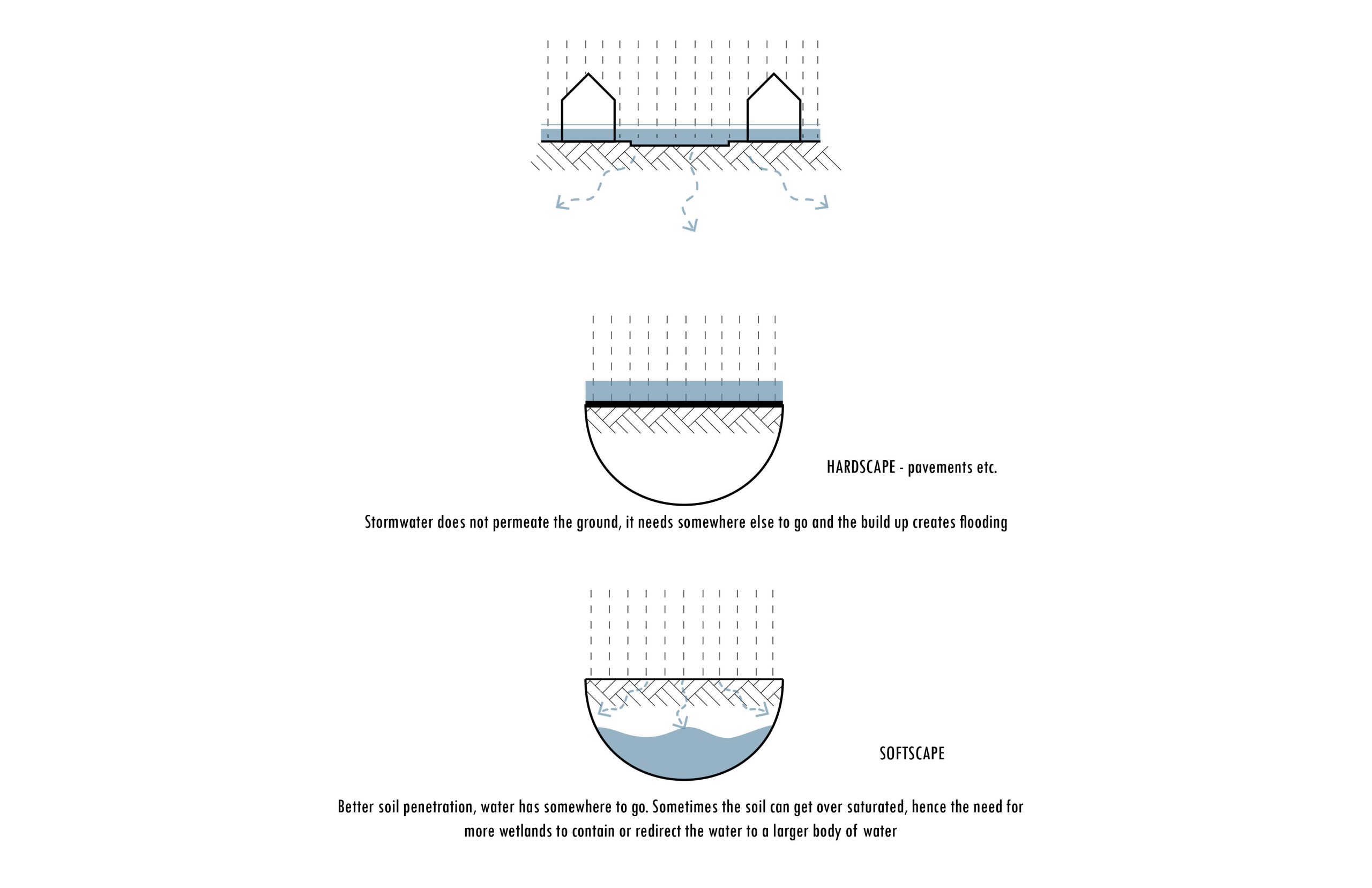
Major causes of flooding is from urbanization of settlements and the lack of porous surfaces in cities. Hardscape surfaces preventing the flow and absorption of water through the ground. The water needs somewhere to go so it just keeps rising


Using these 6 tactics for Flood risk management we can control not just only the flooding but improve the health of the communities. Attenuate helps reduce the speed of water, using riverbank restoration, changing the morphology of the creek and using natural barriers as a buffer Alleviate provides pocket storages along the river like pools, ponds and wetlands Restrict – building infrastructure that protects and prevent water from reaching communities Realign focuses on relocating homes elsewhere away from the flood plains Create – building new landforms or raising houses in or near the water. And finally embrace which combines all the strategies in one.

Proposed site plan with the six strategies for flood risk management implemented. Naturalising the river, adding a berm to protect neighbourhoods, creating spaces and wetlands to flood, water collection etc.

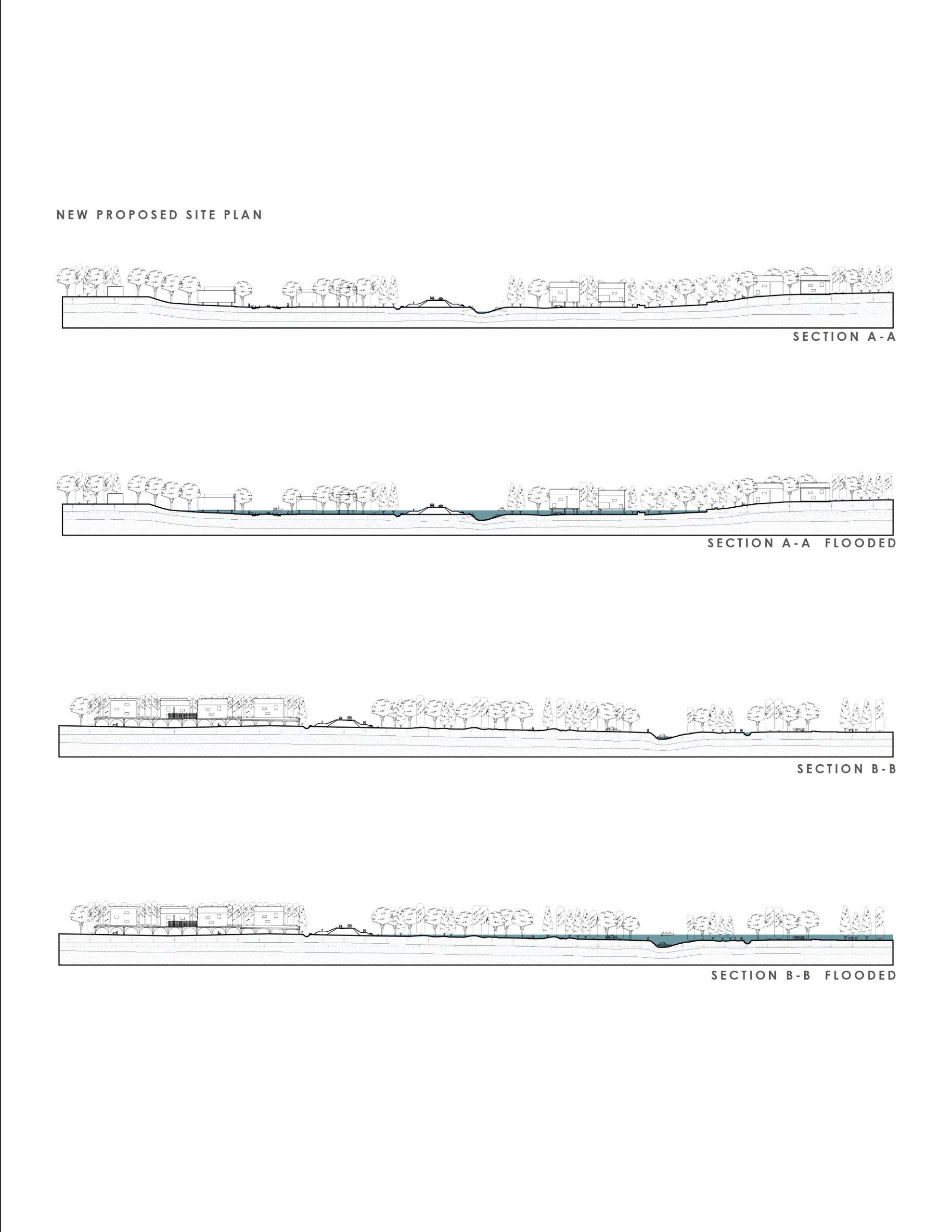
Section slices A-A and B-B. Comparing the old site to the new proposed site with strategies, visualising how it floods vs when it does not flood.
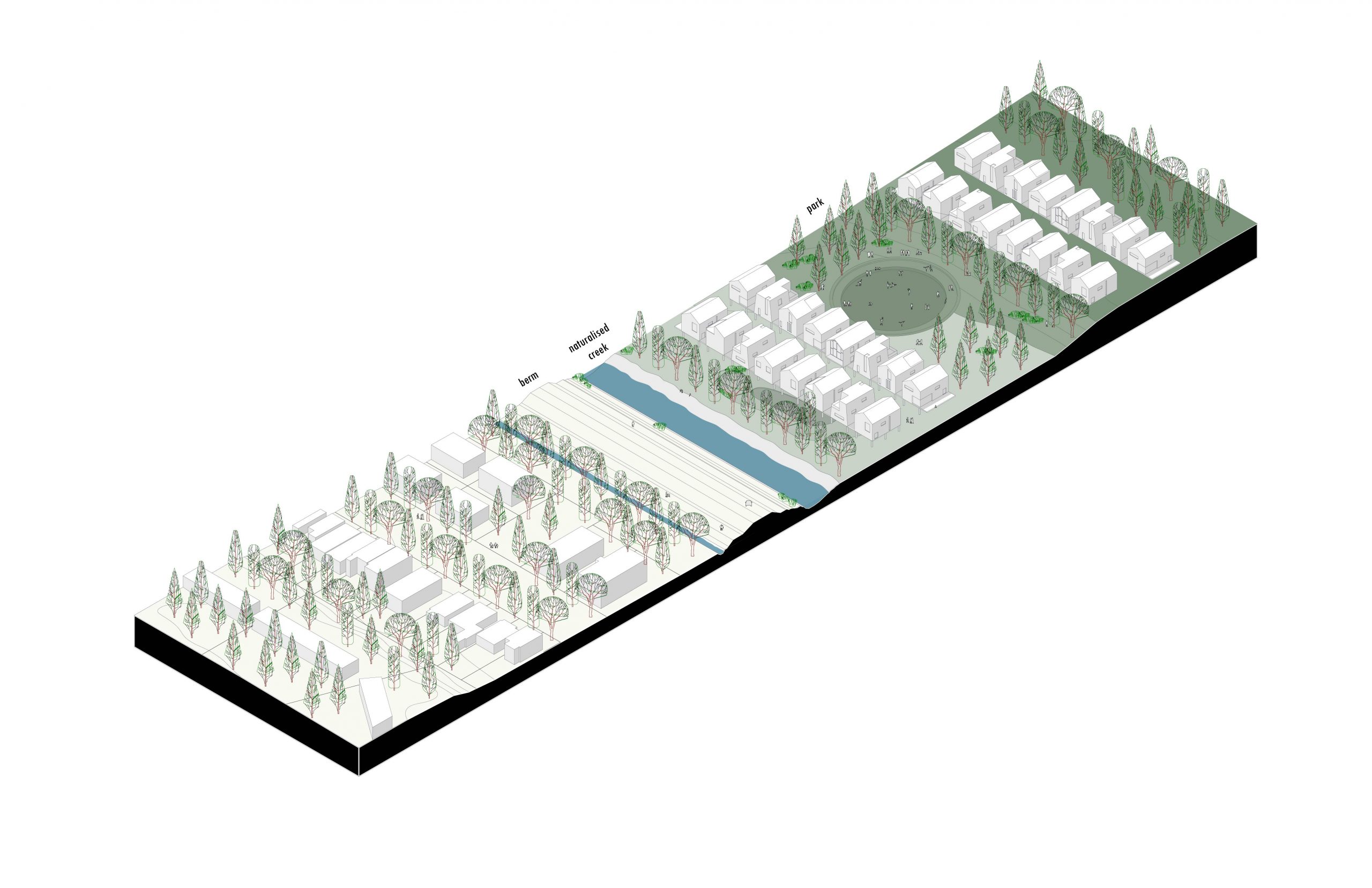

Section A-A axos. Unflooded vs Flooded


Section B-B axos. Unflooded vs Flooded
These are zoomed in sections of how the machine works on street level.
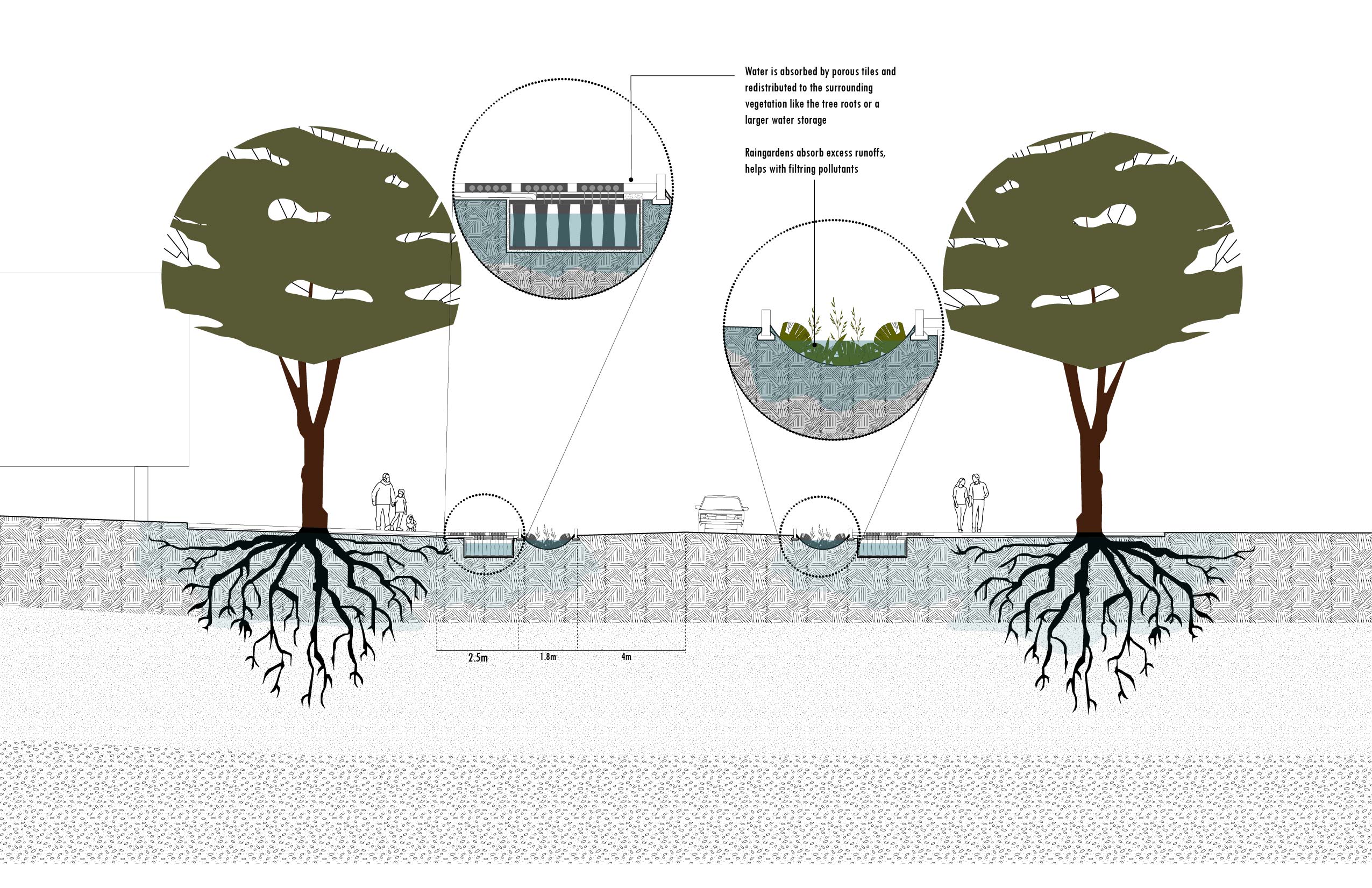
Sections of the street – Porous tiles take in water which permeates through the ground and the tree roots absorbs them , rain gardens help with run offs and filtration.
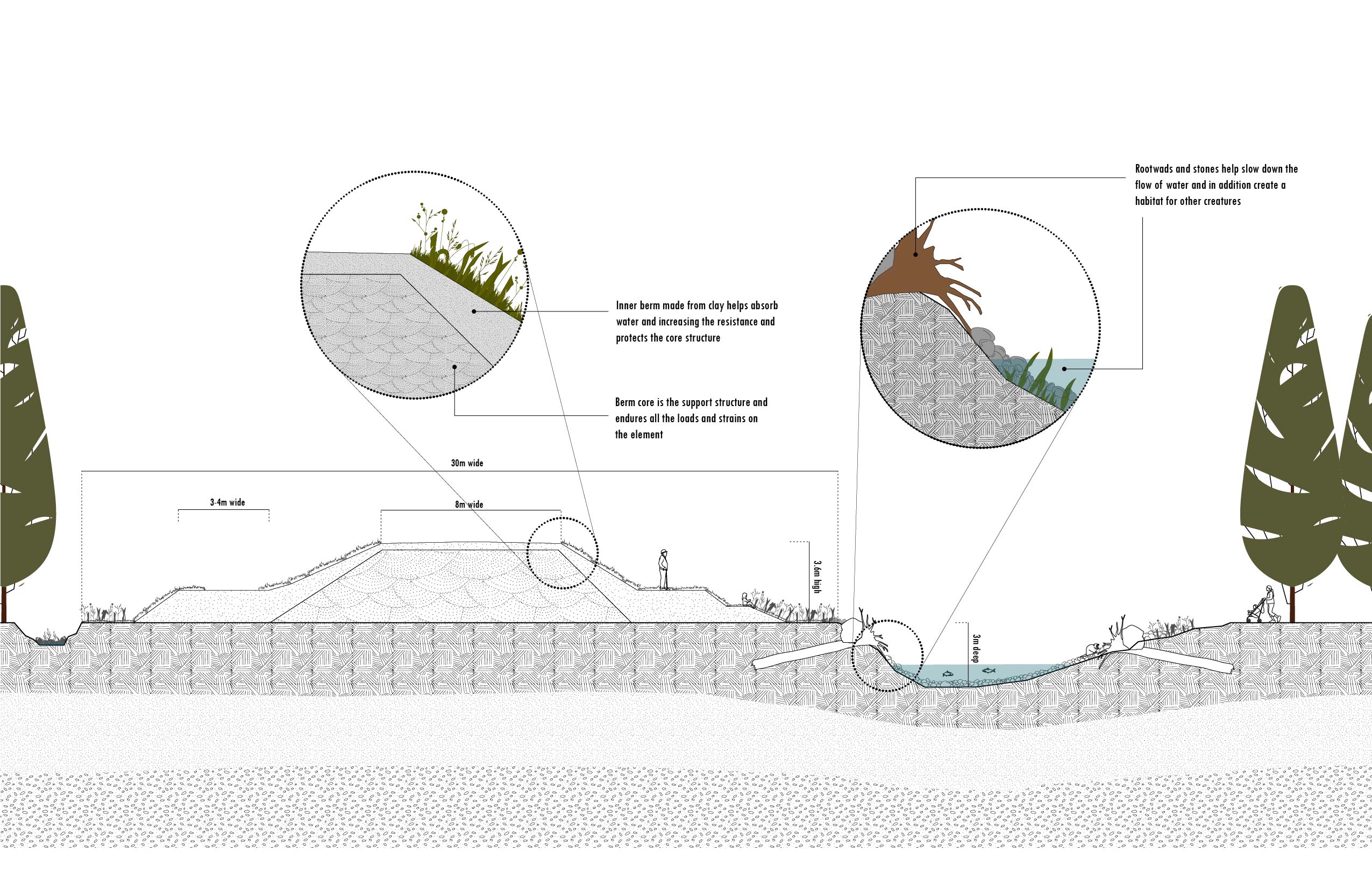
Naturalisation and restoration of the creek . The top layer of the berm made from clay absorbs the water, this helps with the integrity of the structure and on the right the rootwads which are fallen trees with stones are interlaced into the riverbanks which help reduce the velocity of the water and at the same time create habitats for other animals


